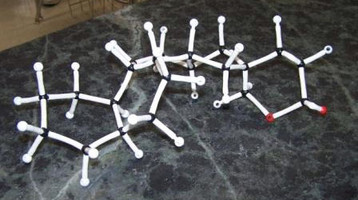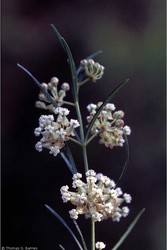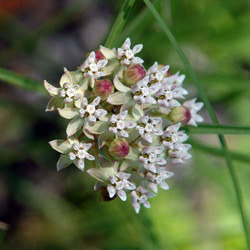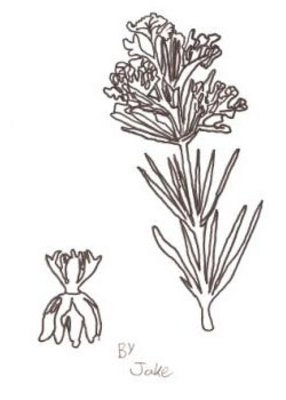Lakota name: Waĥpẻ tiŋpsila
 Listen to Lakota Plant Name: waĥpé tiŋ'psila
Listen to Lakota Plant Name: waĥpé tiŋ'psila
Scientific name: Asclepias verticillata
Common name: Whorled milkweed
Lakota medicinal uses: Lakota mothers use it when they don't have milk.
Toxicity: Very poisonous to livestock but is unpalatable and rarely consumed. It can cause problems when fed in hay.
Secondary compounds: The plant produces substances called cardenolides. A study says that the more cardenolides that you have in the trichomes (the hairs on the leaf) the better chance you have of reducing attacks by aphids, Aphis nerii.


Molecular structure of a cardenolide © 1sagebrush24
Description: Whorled milkweed is a single or sparingly stemmed un-branched perennial, commonly over 2 feet tall. The narrow linear leaves are whorled along the stem. Small greenish-white flowers occur in flat-topped clusters on the upper part of the stem. Leaf base clasping the stem, strictly glabrous, sessile, ovate blades. Flowers have corolla lobes 4-5 mm long with a greenish-white color.



Asclepias verticillata. Left: leaves and flowers © . Right: close-up of flowers © Chris Evans, River to River CWMA, United States.
Similar species: Carolina milkweed, Mexican milkweed
Flowering period: June to September
Distribution: It is located in all states except: Alaska, Hawaii, California, Oregon, Washington, Nevada, Idaho, Utah, Colorado, New Hampshire, and Maine.
Habitat: Prairies, pastures, open woods, roadsides, and railroads.




 Go to quick links
Go to quick search
Go to navigation for this section of the ToL site
Go to detailed links for the ToL site
Go to quick links
Go to quick search
Go to navigation for this section of the ToL site
Go to detailed links for the ToL site